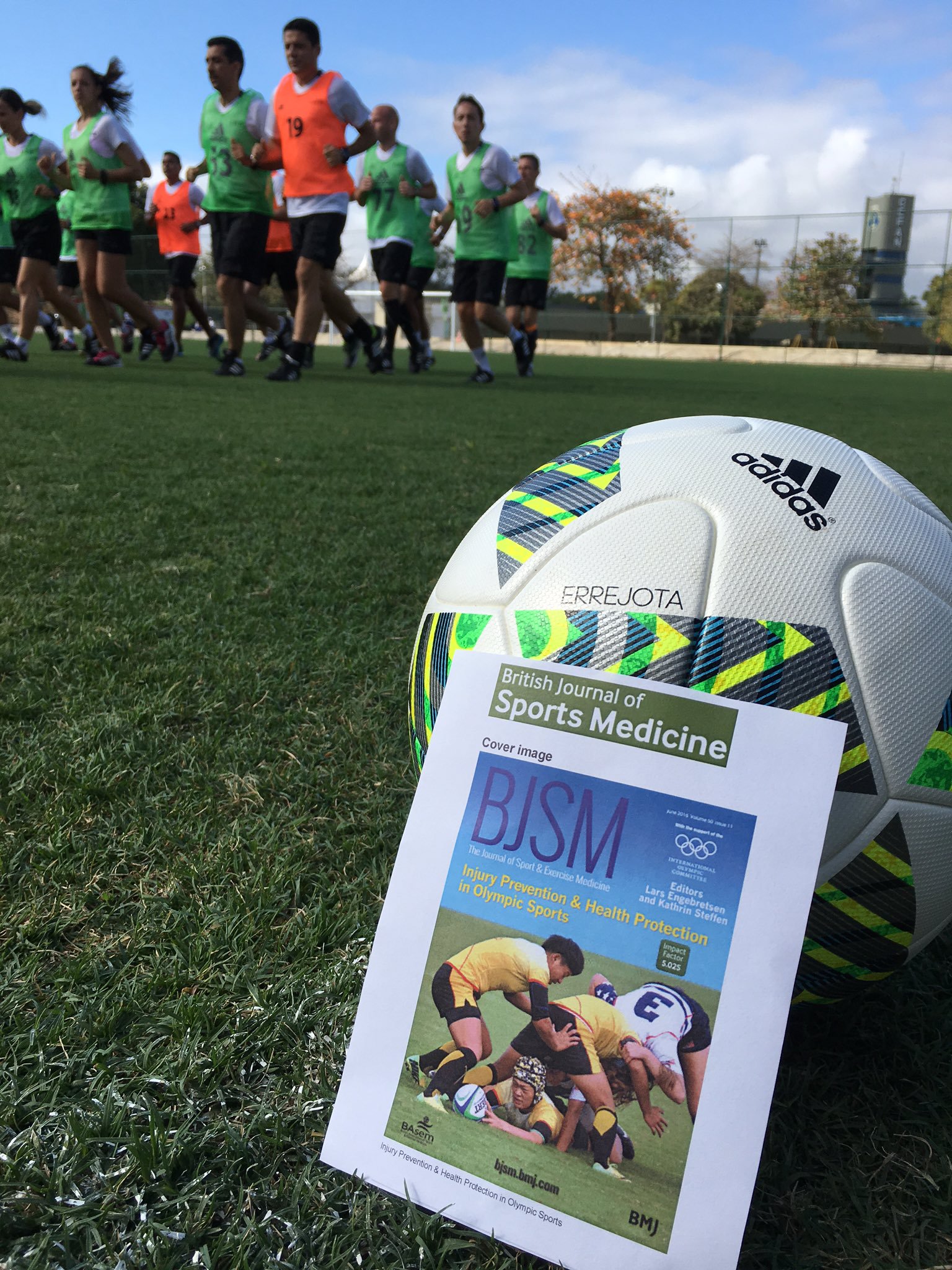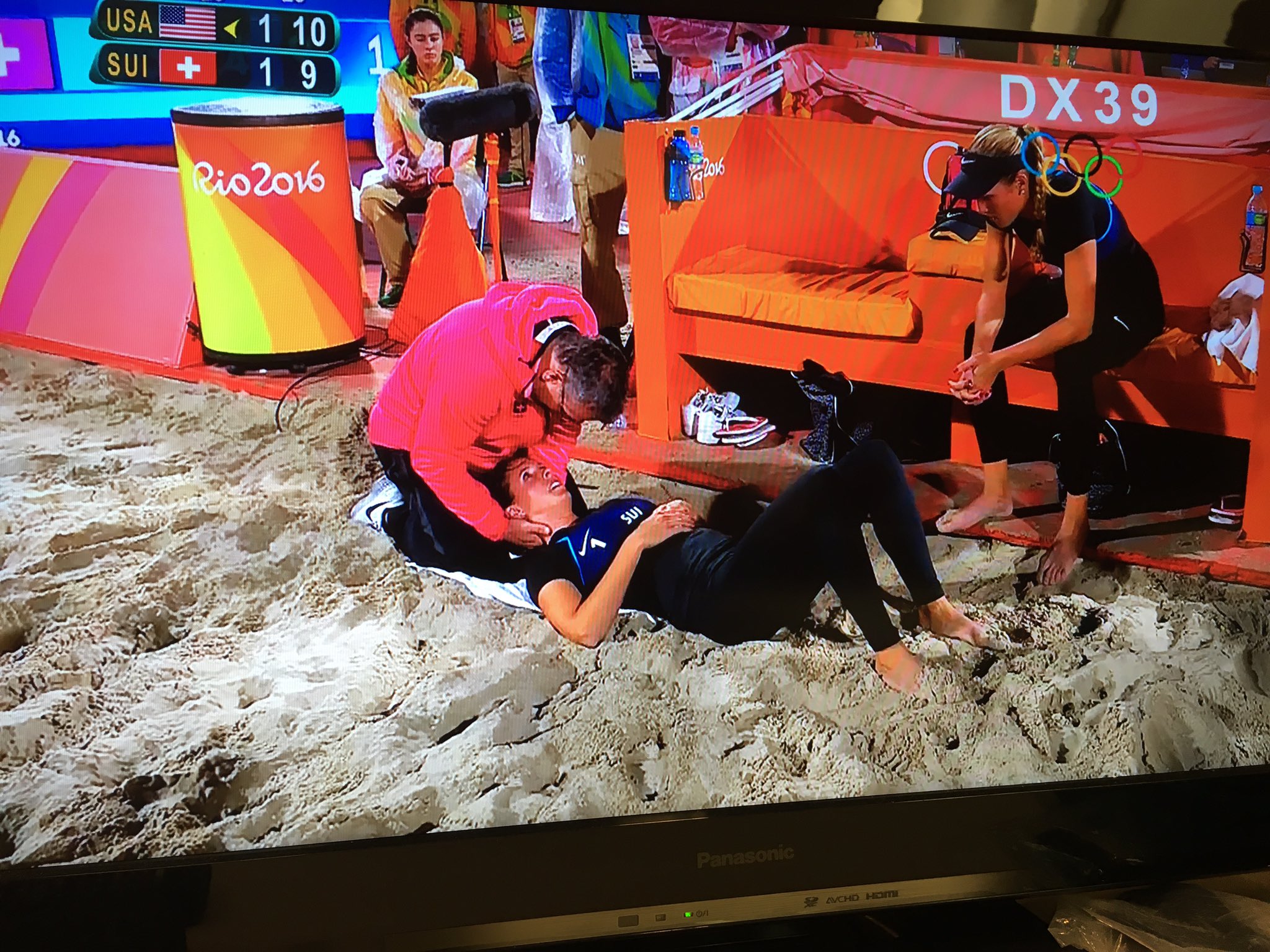#IOCprev2017 Engagement, Evidence, & Practice Blog Series
By Nirmala Perera (@Nim_Perera)
Examining the changing profiles of injuries provides opportunity for insight, and potential to better embed innovative injury prevention strategies and advances in sports medicine.

Athletes from over 200 nations gather every four years for the Olympic and Paralympic Games to celebrate sport, culture, fair play and international cooperation on sport’s biggest stage. I like many of you BJSM blog readers who watched the Rio Olympic (#Rio2016) coverage saw the myriad of injuries and illness captured and broadcast by the media, from fractures and dislocations to diarrhoea and subsequent collapse. At elite level, top players and teams are separated by a very small margin. Injuries and illness affect athletes’ ability to train, complete and can even shatter their dreams of gold. Injury prevention therefore, could be considered ‘legal’ performance enhancement.1 2
Work It. Make It. Do It. Makes Us: Faster. Higher. Stronger.
The Olympic motto Citius, Altius, Fortius (Latin for “Faster, Higher, Stronger”) inspires athletes to reach new heights, changing the nature of the sport over time. The Olympic Games are the pinnacle of many athletes’ careers. They aspire to successfully compete at the games. Injuries and illness can be the cost of striving for athletic greatness. Protecting athletes’ health is therefore, important to maximise performance and chances of success. Current profile of injuries in a sport might be different to injuries suffered by athletes participating the same sports in the past as rules, techniques and equipment evolve. Additionally, elite athletes enter sports much earlier and some continue to compete for longer. Consequently, sports medicine and injury prevention has to evolve with the athlete and their sport.
Injury and illness surveillance of Olympic athletes
The number one priority for the IOC and its Medical and Scientific Commission is protecting the health of the athletes3. Injury surveillance therefore, was initially established by the IOC during the 2004 summer games in Athens and was limited to team sports4. In 2008 injury surveillance was expanded to include all athletes participating in the Beijing Summer Olympics5 and subsequently the 2010 Winter Olympics in Vancouver6; 2012 London Summer Olympics7, and 2014 Sochi Winter Olympics8. For the first time, injuries in 2012 London Paralympics were reported9 10.
The overall injury rate has remained similar over the last two summer Olympics (9.6% in Beijing5, 11.0% in London7). In addition, 7.2% athletes suffered an illness such as infections to respiratory and gastrointestinal tract during London Olympics. Female athletes were 1.6 times more likely to be ill than their male counterparts7. It is likely that these figures will remain comparable in #Rio2016.
Olympic pains: the most common injuries by sport, nature and mechanism of the injury

Football, taekwondo and handball topped the injury list in both Beijing and London. Field hockey and weightlifting, also in the top 5 sports with the most frequent injuries in Beijing5 were ousted by BMX and mountain biking in London7.
Fractures, ligament ruptures and dislocations were the most common types of injury during the Beijing games5. The most common injuries for the London games were ligament sprains, muscle strains, fractures7. Head/neck/face, hand/wrist/fingers and lower back were the most frequently injured regions at #London2012. Interestingly, most of the diagnosis examinations performed at #Rio2016 Polyclinic at the Athletes Village were to the knee, lumber region and ankles.
Overuse was the second common cause of injuries in Beijing5. And, it was the most common injury mechanism in London. However, 68% of the reported overuse injuries did not require time-loss from the sport7. High prevalence of overuse injuries signals to the repetitive nature of elite sport. Elite players are selected on the strength of the key sports specific skill. Many hours of practice are required for athletes to achieve mastery, which necessitate repetitive activities potentially associated with overuse and recurrent injuries. Particularly if training regimes are poorly managed.
Cupping: why athletes use it?
Techniques to manage pain of overexertion such as myofascial decompression (i.e. cupping) to improve healing and release muscle stress attracted a heightened media coverage in #Rio2016. Cupping has shown to provide effective pain management but the evidence is of poor quality and subject to bias. Exact mechanism of cupping is unclear; it may work by ‘counter irritation’ or by ‘placebo effect’. Yet, athletes turn to drug-free methods such as cupping as an alternative to medications possibly because the anti-doping regulations.
Injury prevention research into practice
Nine IOC research centres of excellence work alongside sporting organisations and key stake holders, striving to develop and implement effective preventive and treatment measures for injuries 3. For example, in Beijing5 49.6% of the injuries resulted in an inability to compete, this was reduced to 35.0% in London7. This might be due to advancement in sports medicine where management strategies such as activity modifications/restrictions and analgesia may have delay treatment or prolong recovery until the end of the games, particularly for overuse injuries. The latest research innovations developed by preeminent international authorities in sport injury and illness prevention will be showcased at the IOC World Conference on Prevention of Injury and Illness in Sport in Monaco (#IOCprev2017). In addition, the IOC supports the #BJSM Injury Prevention and Health Protection issues to further enhance knowledge translation to protect the health of both professional and amateur athletes.
References
- Raysmith BP DM. Performance success or failure is influenced by weeks lost to injury and illness in elite Australian track and field athletes: A 5-year prospective study. J Sci Med Sport 2016;19(10):778-83. doi: 10.1016/j.jsams.2015.12.515
- Hägglund M WM, Magnusson H, et al. Injuries affect team performance negatively in professional football: an 11-year follow-up of the UEFA Champions League injury study. Br J Sports Med 2013;47(12):738-42. doi: 10.1136/bjsports-2013-092215
- Engebretsen L BR, Cook JL, et al. . The IOC Centres of Excellence bring prevention to Sports Medicine. Br J Sports Med 2014;48(17):1270-75. doi: 10.1136/bjsports-2014-093992
- Junge A LG, Pipe A, et al. . Injuries in Team Sport Tournaments During the 2004 Olympic Games. Am J Sports Med 2006;34(4):565-76. doi: 10.1177/0363546505281807
- Junge A EL, Mountjoy ML, et al. . Sports injuries during the summer Olympic games 2008. Am J Sports Med 2009;37(11):2165-72.
- Engebretsen L SK, Alonso JM, et al. . Sports injuries and illnesses during the Winter Olympic Games 2010. Br J Sports Med 2010;44(11):772-80.
- Engebretsen L ST, Steffen K, et al. . Sports injuries and illnesses during the London Summer Olympic Games 2012. Br J Sports Med 2013;47(7):407-14.
- Soligard T SK, Palmer-Green D, et al. . Sports injuries and illnesses in the Sochi 2014 Olympic Winter Games. Br J Sports Med 2015;49(7):441-47.
- Willick SE WN, Emery C, et al. The epidemiology of injuries at the London 2012 Paralympic Games. Br J Sports Med 2013;47(7):426-32. doi: 10.1136/bjsports-2013-092374
- Derman W SM, Jordaan E, et al. . Illness and injury in athletes during the competition period at the London 2012 Paralympic Games: development and implementation of a web-based surveillance system (WEB-IISS) for team medical staff. Br J Sports Med 2013;47(7):420-25. doi: 10.1136/bjsports-2013-092375
**************************************
Nirmala Perera (@Nim_Perera) is a health practitioner, an epidemiologist and a PhD scholar at the Australian Centre for Research into Injury in Sport and its Prevention (@ACRISPFedUni). She is the @IOCprev2017 #SoMe campaign coordinator.
PS: Image credit info as per freepick.com
copy this link to your blog or website <a href=’http://www.freepik.com/free-vector/polygonal-athlete-silhouette_715976.htm’>Designed by Freepik</a>